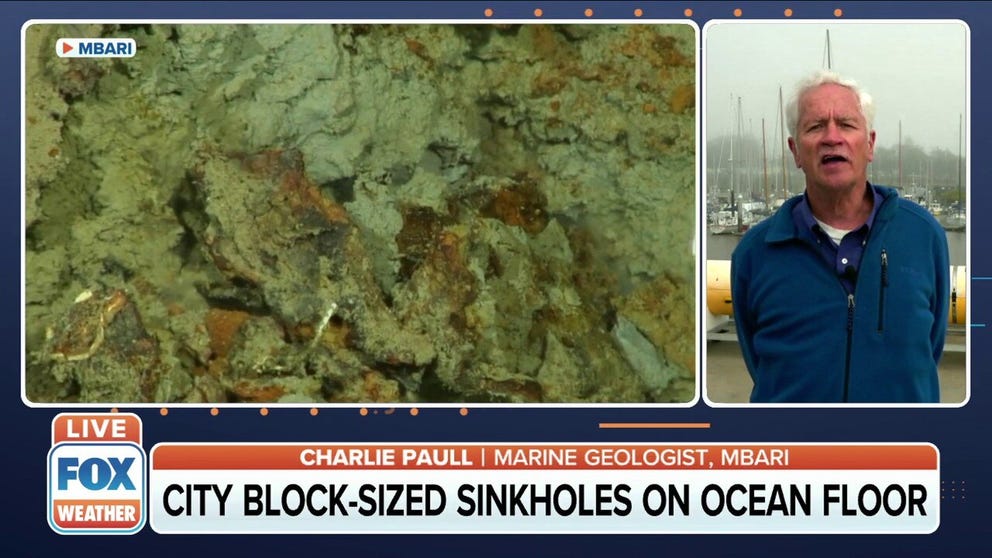City block-sized sinkholes revealed on Arctic seafloor as ancient permafrost thaws
The reason that these holes are developing is attributed to the decomposition of permafrost in the area
Massive sinkholes discovered in Arctic seafloor
Marine geologist of MBARI Charlie Paull says rapid changes are occurring in the Arctic seafloor, with sinkholes the size of city blocks forming.
BEAUFORT SEA – Marine scientists have discovered newly formed deep sinkholes in a remote part of the Arctic seafloor that is the size of an entire city block.
"We discovered that the seafloor at the shelf edge of the Arctic Ocean is changing remarkably quickly," said Charlie Paull, senior scientist at the Monterey Bay Aquarium Research Institute.
Since 2003, MBARI has been part of an international collaboration to study the seafloor of the Canadian Beaufort Sea. Marine geologists have used an autonomous torpedo-like underwater robot to collect detailed surveys mapping the seafloor.
"We map one small area once, and we went back four years later, mapped it again and was shocked to see the size of the changes that we see," Paull said.
In less than a decade, scientists mapped the same area four times, which is about one-third of Manhattan in New York City.
"And during that time period, we’re seeing 40 new depressions develop. The largest one can consume an entire Manhattan block composed of six-story buildings," Paull said.
LOST SHIP ENDURANCE FOUND BRILLIANTLY PRESERVED 107 YEARS AFTER SINKING OFF ANTARCTICA
The reason that these holes are developing is attributed to the decomposition of permafrost in the area.
"And when you melt or defrost permafrost, methane comes out and up toward the seafloor getting into the atmosphere," Paull said. "And this is adding into the whole discussion about the impacts of permafrost decomposition in the Arctic."
Paull said he is also interested in the fact that, although this is in a very rural area and there is currently no infrastructure on the seafloor, the ice is going away in the summer. There is also interest in oil and gas development.
"These features on the seafloor would have serious consequences if you put any infrastructure near it," Paull said.
HOW TO WATCH FOX WEATHER ON TV
How widespread similar changes are on the Arctic shelves remains unknown, as this is one of the first areas in the Arctic studied with multiple multibeam bathymetric surveys.
The research team plans to return to the Arctic this summer in an effort to refine its understanding of the decay of submarine permafrost.
